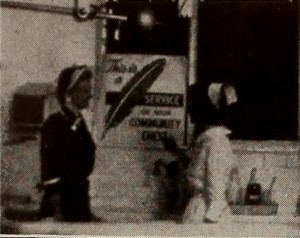
"Produced by the Long Beach (Calif.) Cinema Club for its local Community Chest, Because of You is a competent presentation of the various community services offered by the local welfare organizations which receive their support from the Chest. The activities of these agencies, as they aid an unfortunate family to which things seem to happen, are presented in a well-paced manner, without appearing to overemphasize any one agency over the others. The production was well photographed by Lucille Lloyd, capably directed and acted, and is smoothly edited. The narrative, while good, could have been shortened in spots. For a club and community effort, Because of You accomplishes its objective of making its viewers Community Chest conscious." Movie Makers, Dec. 1953, 334.

"Candy Capers is a gay little dance fantasy in animation, using lollypops, wafers and other familiar childhood sweets. It is gay, that is, until the entrance of the villain— a long black sinuous licorice snake. The wafers shiver in horror as one of them is captured by the intruder. Then they organize their attack and rout the enemy. Roy Fulmer jr. has achieved smooth animation of his puppets and accompanies them with a pleasant musical score. The result is a bit of confection that is a delight to the eye and ear." Movie Makers, Dec. 1953, 334.
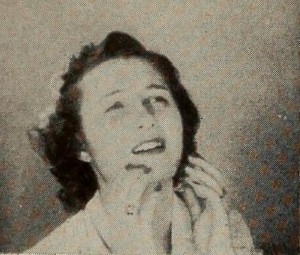
"Maxine Messner, who began her career before her uncle's camera in 1948 with Maxine's Big Moment, has very probably ended it in Dark Interlude. Well, it was a career which began happily — with the simple elation of a school girl's first formal date. And it is one which now ends happily — with marriage. But in the course of this final production it was touch and go whether our heroine would achieve this happiness. For in Dark Interlude William Messner has asked his niece to play a young lady struck down — only temporarily, as it turns out — by blindness. It is a role which she discharges with a moving simplicity and honesty — as, in fact, do those who play her father and her sweetheart. And Mr. Messner brings to their aid superb camera work and delicately luminous dramatic lighting. Unfortunately, however, the development of his basic theme does not match in simplicity and clarity either the film's playing or its production values." Movie Makers, Dec. 1953, 334.
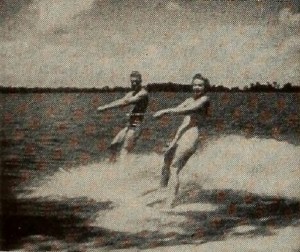
"Anyone who sees Fabulous Florida will appreciate that Haven Trecker not only has covered that state thoroughly in his travels, but that he has worked hard to record its tourist and industrial highlights in a long series of effective sequences. Beautifully photographed, well edited and with a pleasantly informative narrative, Fabulous Florida is distinguished by the excellence of many of its sequences. We remember with particular pleasure the section devoted to Marineland and its sea life, and the colorful sequence on the manufacture of fishing lures." Movie Makers, Dec. 1953, 334.
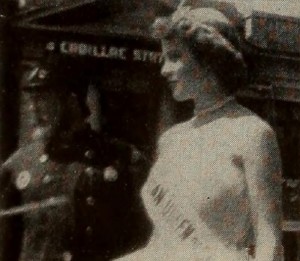
"In Festival Michigan, Cornelius Vanden Broek undertook to record all of the fairs and community festivals that occur in the State of Michigan throughout the year. He was prompted to make this record for the benefit of many friends who were not able to attend them and thus to provide them with a vicarious participation. The usual parades, crowning a queen of this or that, live stock, home preserves, midway attractions and various contests for young folks are all here, done with pleasantly brief sequencing. A lively commentary accompanies the film. On the whole, this rather formidable undertaking results in a pleasant and completely honest endeavor. Mr. Vanden Broek achieved his goal with fine spirit." Movie Makers, Dec. 1953, 334.
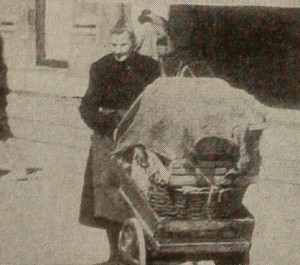
"Oscar H. Horovitz, in Firenze, Queen of the Arts, has once again produced an excellent record of a city, turning this time to Firenze (Florence), the Tuscan capital of the Italian Renaissance. Firenze is a monochromatic city of varying tones of brown, but a most attractive one as Mr. Horovitz has shown, existing today just as it did during the 16th Century. Belying the film's title, however, the many art treasures for which this city is justly famed are ignored, the filmer desiring apparently to show Firenze through an architectural eye. The film is, nevertheless, interesting, with lively pace and plenty of human interest. Here is a rewarding excursion to one of the fabulous cities of our time." Movie Makers, Dec. 1953, 334.
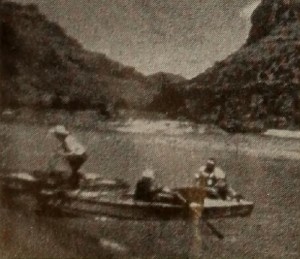
"Louise M. Fetzner is a housewife who plainly likes the thrills of running the rapids down dangerous rivers while she makes movies that really move! In Green River, Mrs. Fetzner has a well paced, well photographed and altogether literate account of the adventures which she and her companions had on the Colorado's main tributary. The film is interesting and exciting, and tells its story concisely and without padding. The accompanying narrative is written and delivered effectively, although occasionally the level of the background music rises to overwhelm the narrator's voice." Movie Makers, Dec. 1953, 344.
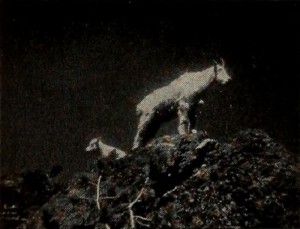
"Ralph O. Lund, whether he knows it or not, has adopted the same narrative technique used earlier in a nature film (The Gannets) whereby one of the wild creatures being pictured becomes the narrator. In Monarchs of the Mountain Tops, Mr. Lund's "Pete Smith" is an agile and bewhiskered mountain goat. His recurring comments enliven considerably the producer's study of the flora and fauna of Glacier National Park." Movie Makers, Dec. 1953, 334.
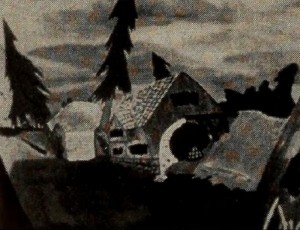
"That most difficult and painstaking of film forms known as animation also may be one of the most rewarding, especially when the result is as delightful as The Deserted Mill, by Irwin Lapointe. This film is, quite simply, a leisurely picturization of an old mill, with its placid stream and the animals, large and small, that live in and around it. Mr. Lapointe's art work is imaginative and his camera treatment of the material crisp and well paced. A stimulating musical accompaniment by Ferde Grofe complements the picture's mood and aids immeasurably in making this little film a rewarding one both to the filmer and to his future audiences — which should be legion." Movie Makers, Dec. 1953, 334.
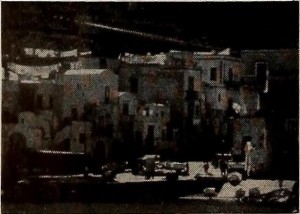
"From the Island of Capri, Helen Welsh has brought home a charming, sunny vignette in Where the Sirens Sang. It is the sort of film any traveler would like to have as a memento of a pleasant sojourn. Miss Welsh's seeing lens has captured the spirit of the countryside, its people, its luxurious beaches, its typical transportation. For this reviewer, Where the Sirens Sang plays a beckoning tune indeed." Movie Makers, Dec. 1953, 334-335.
Total Pages: 299